Magnesium Tallow Lotion Balm DIY Recipe
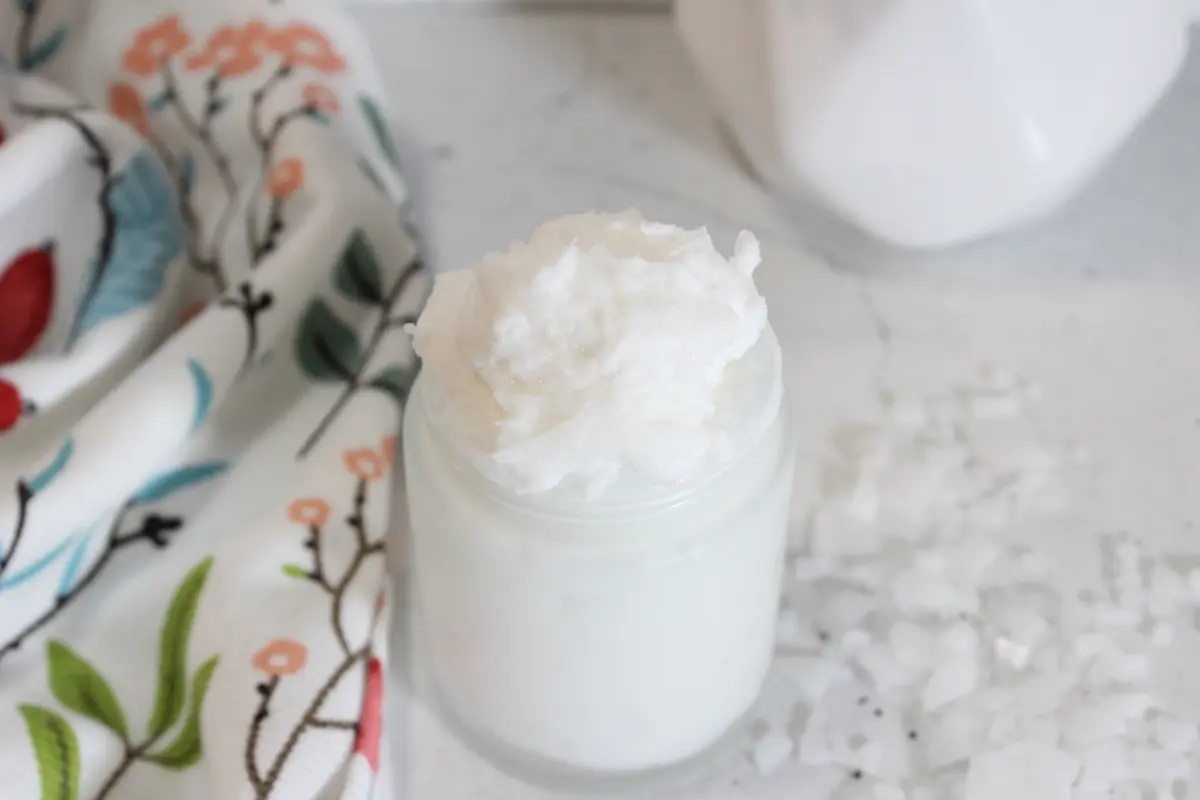
This fabulous Magnesium Tallow lotion combines the moisturizing benefits of tallow with the powerful benefits of magnesium. Get the benefits of both tallow and magnesium in one easy to make DIY balm.
I use affiliate links in this article. If you click a link and make a purchase, I may earn a commission.
Disclaimer: These statements have not been evaluated by the Food and Drug Administration. This information is not information is not medical advice and not intended to diagnose, treat, cure, or prevent disease. If you have a medical condition, please consult your doctor before using essential oils.
Pin for later
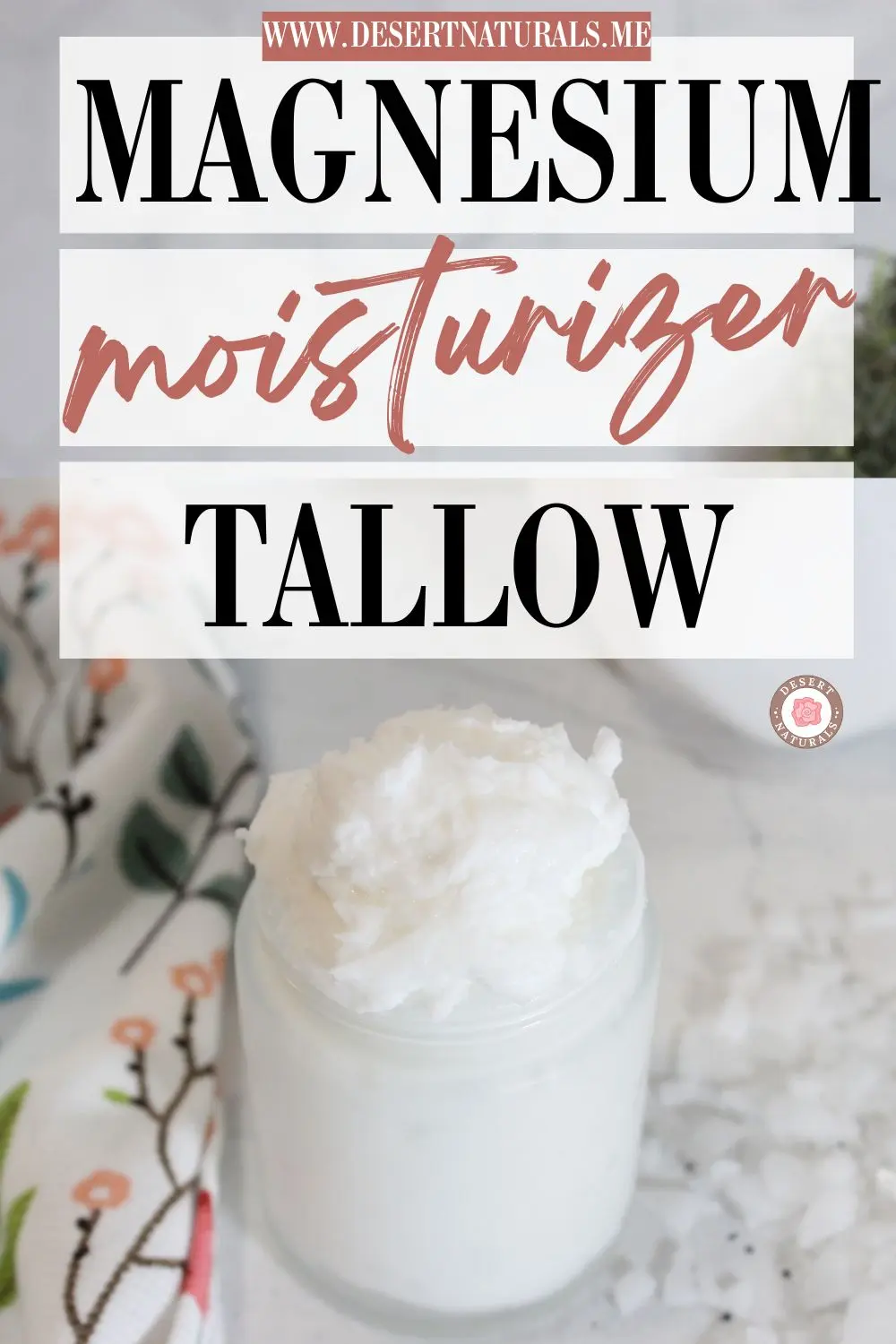
Why you’ll love this Magnesium Tallow Lotion
You’ll love the benefits this easy magnesium tallow balm can provide!
This magnesium tallow lotion combines the benefits of my magnesium lotion with my tallow balm!
It is ultra moisturizing from the tallow, with the all benefits of the added magnesium provides.
Benefits of Magnesium
Magnesium is an essential mineral that plays a crucial role in numerous bodily functions.
Here’s a few of the benefits of magnesium:
- Supports Muscle and Nerve Function: Magnesium is vital for proper muscle contraction and relaxation, as well as nerve impulse transmission.
- Promotes Bone Health: It contributes to bone density and strength, working alongside calcium and vitamin D.
- Aids in Energy Production: Magnesium is involved in the metabolic processes that convert food into energy.
- Supports Heart Health: It helps maintain a normal heart rhythm and can contribute to healthy blood pressure levels.
- May Help Regulate Blood Sugar: Magnesium plays a role in glucose metabolism and insulin sensitivity, which is important for blood sugar control.
- May Improve Sleep Quality: It can help regulate neurotransmitters that promote relaxation and may improve sleep.
- May Reduce Migraine Frequency: Some studies suggest that magnesium may help lessen the occurrence of migraines in individuals with low magnesium levels.
- May Alleviate Symptoms of Premenstrual Syndrome (PMS): Magnesium may help reduce PMS symptoms like bloating and mood changes.
- May Improve Mood and Combat Symptoms of Depression and Anxiety: Magnesium is involved in brain function and mood regulation, and low levels have been linked to an increased risk of these conditions.
- Supports Protein Synthesis: It is necessary for the creation of proteins in the body.
- May Aid in Exercise Performance and Recovery: Magnesium can help with muscle function during exercise and may support recovery afterward.
- May Help with Constipation: Certain forms of magnesium can act as a laxative by drawing water into the intestines.
- Contributes to DNA and RNA Synthesis: Magnesium is essential for the creation and repair of genetic material.
- May Reduce Inflammation: Adequate magnesium levels may help lower markers of inflammation in the body.
- Supports a Healthy Immune System: While not its primary role, magnesium contributes to overall health, which includes immune function.
Not getting enough magnesium can lead to a range of health issues, as it’s involved in so many bodily processes. The effects can vary depending on the severity and duration of the deficiency.
Some symptoms of not enough magnesium:
- Fatigue and Weakness: Feeling unusually tired or weak is a common early sign.
- Loss of Appetite: You might find you’re not as hungry as usual.
- Nausea and Vomiting: These can be among the initial symptoms.
- Muscle Cramps and Twitches: Involuntary muscle contractions, spasms, or tremors can occur.
- Headaches: Some individuals may experience more frequent headaches.
- Irritability or Apathy: Changes in mood, including increased irritability or a lack of emotion, can be linked to low magnesium.
- Sleep Problems/Insomnia: Magnesium plays a role in sleep regulation.
Benefits of Tallow
Tallow, which is rendered animal fat (most commonly beef fat), has been used in skincare for centuries and is regaining popularity for its purported benefits. 1
Here’s a a few of the benefits of tallow for our skin:
- Deep Moisturization: Tallow is rich in fatty acids like oleic acid, palmitic acid, and stearic acid, which are similar in composition to human sebum (the skin’s natural oils).2 This similarity allows it to be easily absorbed and provide deep, lasting hydration, making it particularly beneficial for dry skin.
- Skin Barrier Support: The lipids in tallow can help to restore and strengthen the skin’s natural barrier.3 A healthy skin barrier is crucial for protecting against environmental stressors, irritants, and preventing moisture loss.4
- Rich in Fat-Soluble Vitamins: Tallow contains naturally occurring fat-soluble vitamins, including:
- Vitamin A: Known to support skin cell turnover, promote skin repair, and may help reduce the appearance of fine lines.5
- Vitamin D: Plays a role in skin cell growth, repair, and immune function. It may also help with skin conditions like psoriasis.
- Vitamin E: A potent antioxidant that helps protect the skin from free radical damage caused by UV radiation and pollution.6 It also has moisturizing and soothing properties.7
- Vitamin K: May aid in skin healing, improve skin tone, and potentially reduce the appearance of bruises and dark spots.8
- Anti-inflammatory Properties: Some components of tallow, like conjugated linoleic acid (CLA), are believed to have anti-inflammatory effects.9 This can be beneficial for calming irritated skin and may help with conditions like eczema or rosacea.10
- Nutrient Compatibility: Because its fatty acid profile is similar to human skin, tallow is often well-tolerated, even by some with sensitive skin. It delivers nutrients in a form that the skin can readily use.11
- Non-Comedogenic (for many): While experiences can vary, many users find that high-quality, properly rendered tallow does not clog their pores, unlike some other heavy moisturizers. However, those with very oily or acne-prone skin may still want to patch-test.
- Supports Collagen Production: Some proponents suggest that the nutrients in tallow can help support the skin’s natural collagen production, contributing to skin elasticity and firmness.12
- Antimicrobial Properties: Some sources suggest tallow may have mild antimicrobial properties, which could be beneficial in preventing bacteria from damaging the skin or contributing to acne.13
- Natural and Traditional: For those seeking natural skincare options with a long history of use, tallow fits the bill as it can be sourced without synthetic chemicals or preservatives often found in commercial products.14
It’s worth noting that while many people report positive experiences with tallow, scientific research specifically on its dermatological benefits is still emerging. The quality of the tallow (e.g., from grass-fed vs. grain-fed animals) can also influence its nutrient profile and potential benefits.15 As with any new skincare product, it’s advisable to do a patch test, especially if you have sensitive or reactive skin.
Ingredients Needed to Make Magnesium Tallow Lotion
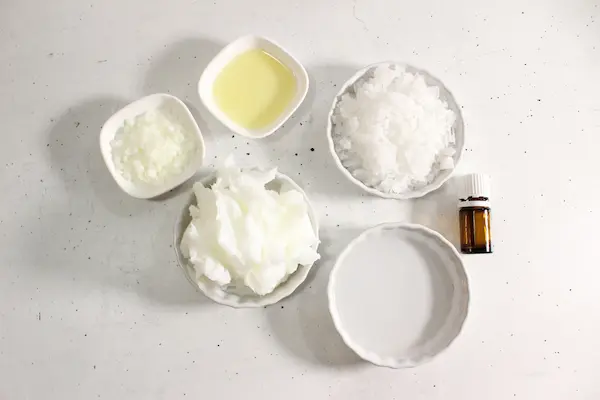
You’ll need the following ingredients to make this magnesium tallow lotion:
- water
- magnesium flakes
- tallow
- beeswax
- almond oil (can substitute with your favorite carrier oil like Jojoba, Argan, etc)
- essential oil – this is optional but highly recommended and can help act as a preservative.
Choosing the Right Type of Magnesium Flakes
You’ll want to use magnesium chloride flakes for this lotion.
It’s important to choose the right type of magnesium chloride flakes. While there are various forms of magnesium available, not all of them are suitable for transdermal use.
Magnesium chloride flakes offer high bioavailability, meaning they are easily absorbed through the skin and efficiently utilized by the body.
Other forms of magnesium, such as epsom salt (magnesium sulfate), may not be as effective for topical use. While epsom salts can be beneficial for relaxing baths, it may not provide the same level of transdermal absorption as magnesium chloride flakes.
When selecting magnesium chloride flakes, ensure that they are of high quality and suitable for transdermal use. High-quality flakes will have a higher magnesium content, ensuring that your lotion delivers the intended benefits.
These are the Magnesium Chloride Flakes I used for this DIY Recipe.
Essential Oils for your magnesium tallow lotion
Pick your favorite scent or use an oil for a specific need you have.
- If you’re looking for oils to help you relax and sleep, see this article.
- If you have specific needs for your skin, see this article on the best essential oils for skin to select which oils to use.
- If you are in need of support for joints and/or pain, see this article.
- Menstrual cramps / women’s hormones support, see this article
Tip: Be aware if you use citrus essential oils, your skin will be photosensitive and you’ll want to avoid the sun for a few hours.
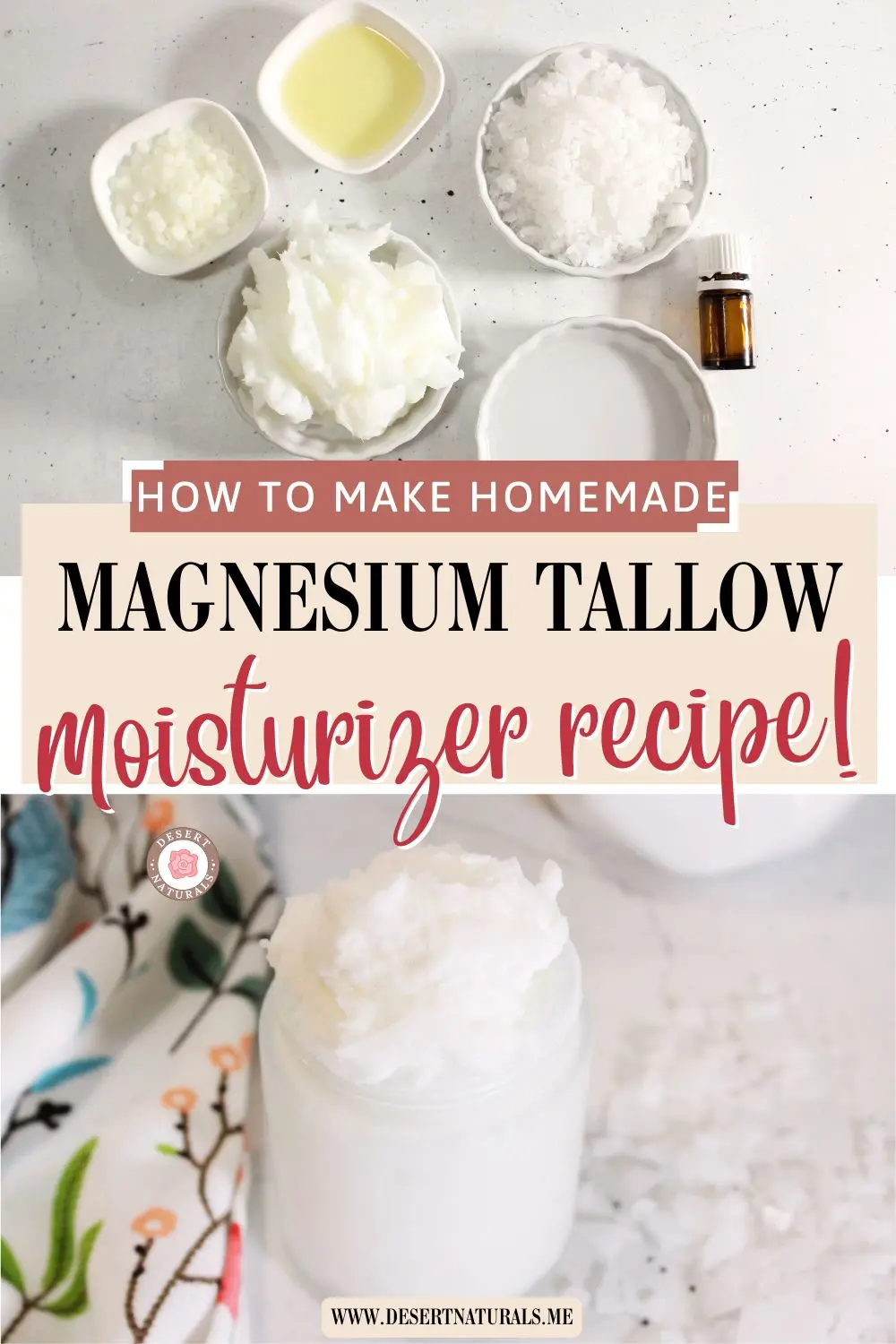
Steps to Make Tallow Magnesium Lotion
First, boil the water. Once the water is boiling, add the magnesium flakes to the water and stir until the flakes are melted. Set aside,
The next step is to melt the 1/2 cup of tallow and 1 TBL beeswax in a double boiler until fully melted. You could also use a microwave safe glass measuring cup or jar and heat in 30 second increments, stirring in between.
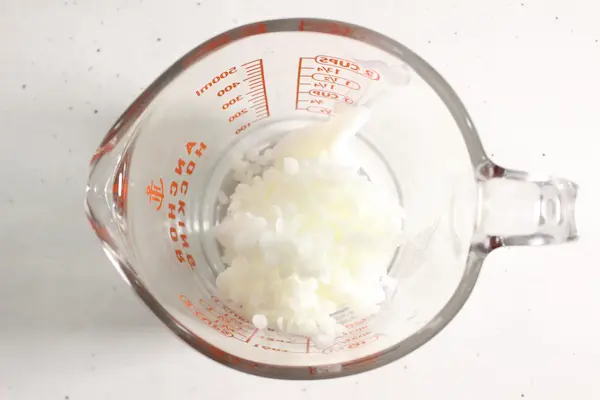
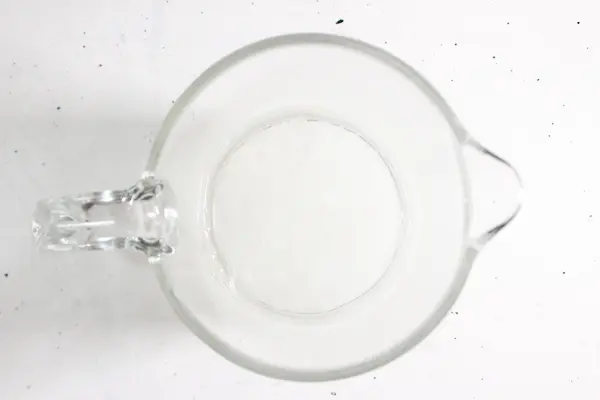
Once melted, stir in 1/2 Tablespoon almond oil to the mixture.
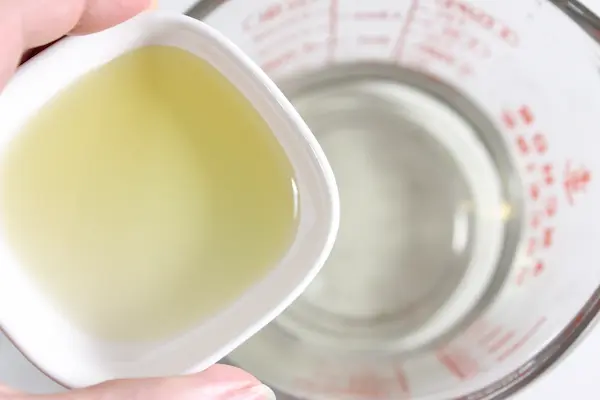
Allow both the tallow mixture and the magnesium mixture to cool.
Once they are the same temperature, slowly pour the magnesium oil into the tallow mixture while using a immersion blender.
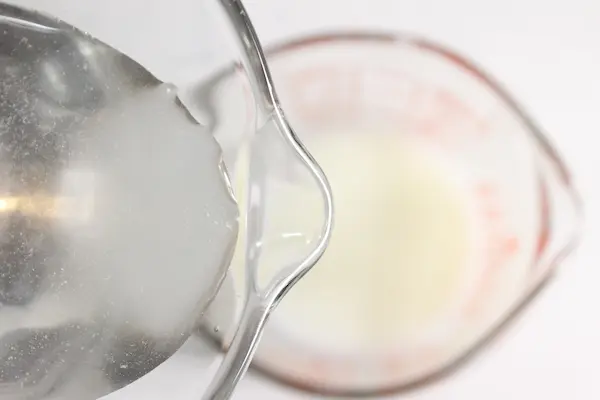
How to Use Your Magnesium Tallow Lotion
Use your magnesium tallow lotion as you would any lotion. Apply directly to the skin and massage in. For targeted relief, apply directly in the are of concern – knees, specific muscles, etc. Or apply all over before bed for the ultimate sleep!
How to Store Your Magnesium Tallow Lotion
Because there is some water used to make the lotion, you’ll want to keep it in the fridge if you are aren’t planning on using it right away.
If you add essential oils, the oils will help act as a preservative and make it more shelf stable. I used essential oils when making mine and it has been on my bathroom vanity for over a month now with no issues.
You could optionally add a bit of vitamin E oil which also acts as a preservative.
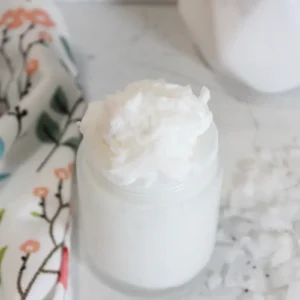
Equipment
Ingredients
- 1/2 cup water
- 1/2 cup magnesium flakes
- 1/2 cup tallow
- 1 tbsp beeswax
- 1/2 tbsp almond oil
- 25 drops essential oils of choice optional. Recommend Lavender, Frankincense, Rose, or your favorite scent.
Instructions
- Boil the water. Once boiled, add the magnesium flakes to the water and stir until the flakes are melted.1/2 cup water, 1/2 cup magnesium flakes
- Then, melt the tallow and beeswax in a double boiler until fully melted.1/2 cup tallow, 1 tbsp beeswax
- Stir in the almond oil.1/2 tbsp almond oil
- Allow both the tallow mixture and the magnesium to cool down.
- Once they are the same temperature, slowly pour the magnesium oil into the tallow mixture while using a immersion blender.
- Once all combined, add in the essential oil and mix one more time.25 drops essential oils of choice
Notes
- Essential oils are optional. Use your favorite scent or see blog post for specific recommendations. (tip: Lavender is fantastic for skin!)
- Be aware if you add citrus essential oils, your skin will be photosensitive and you’ll want to avoid the sun.
- You can use herb infused oils or tallow as well!
Pin for later

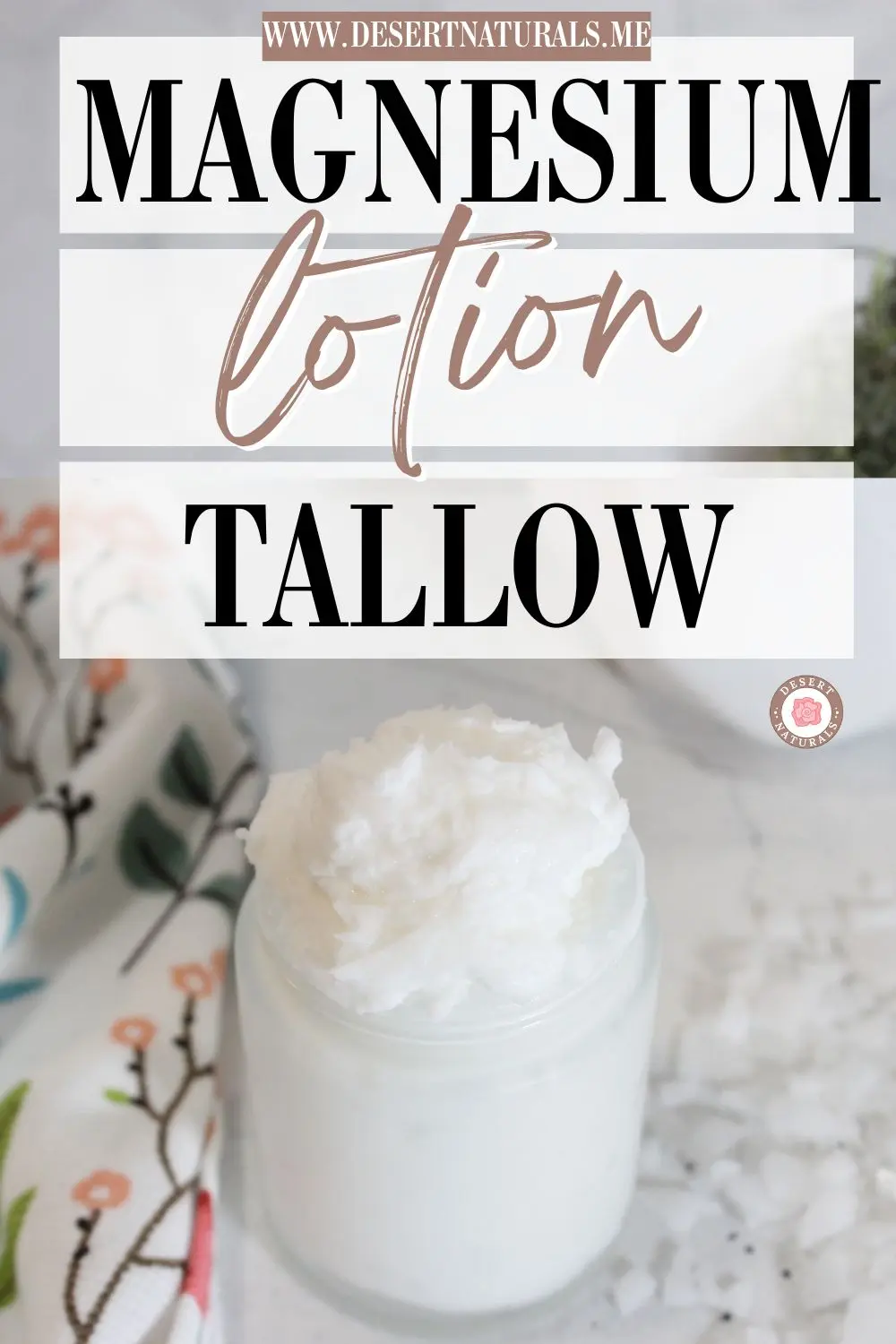

Before You Go, See What’s New

Dawn Goehring
Dawn Goehring is the founder of Desert Naturals. Combining her passion for holistic wellness, natural living and essential oils, she creates informative articles on essential oils, guides you through DIY natural bath & beauty products and homemade non-toxic cleaners, and self care.


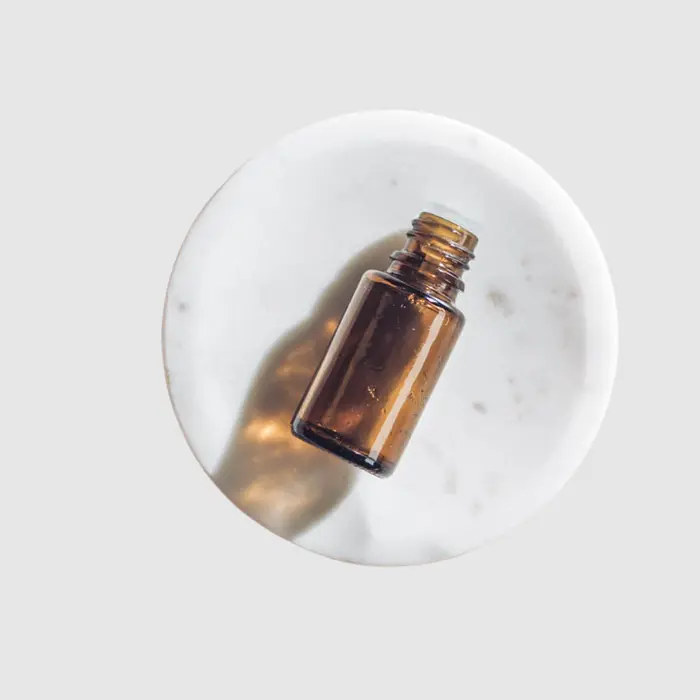





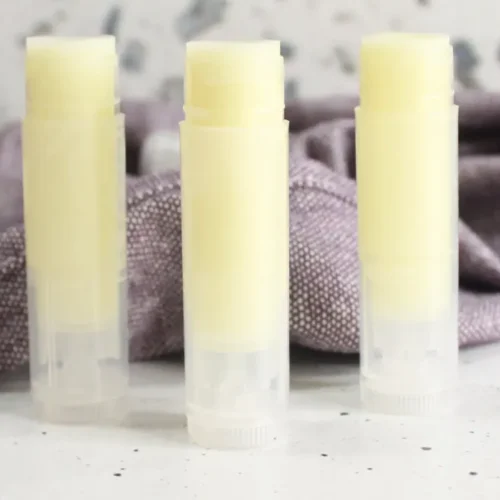
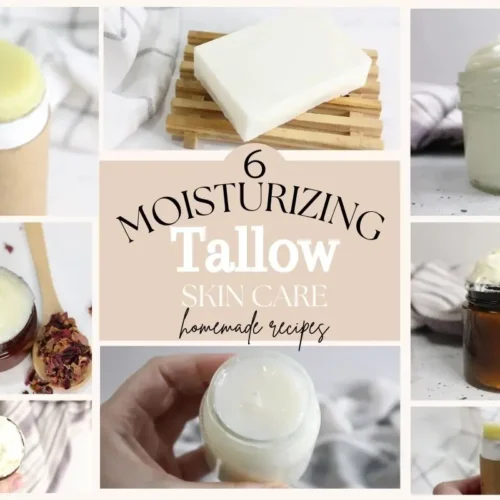
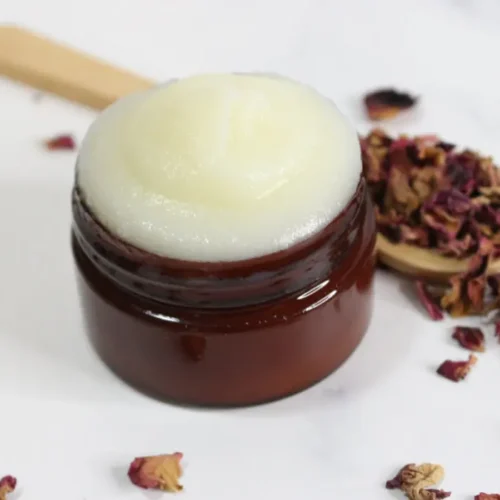
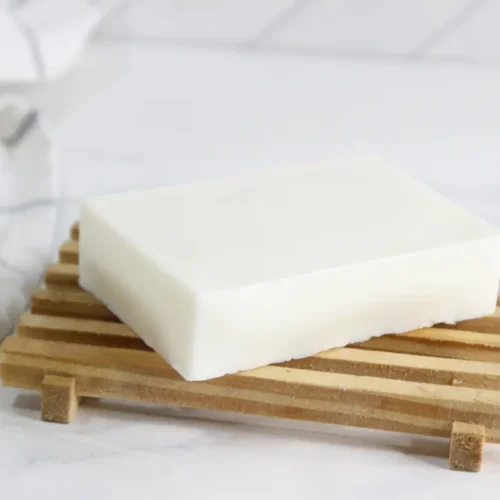
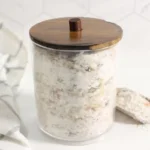
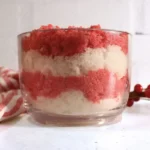
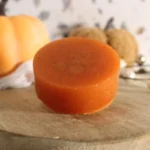

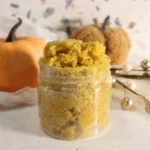
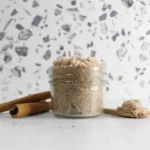
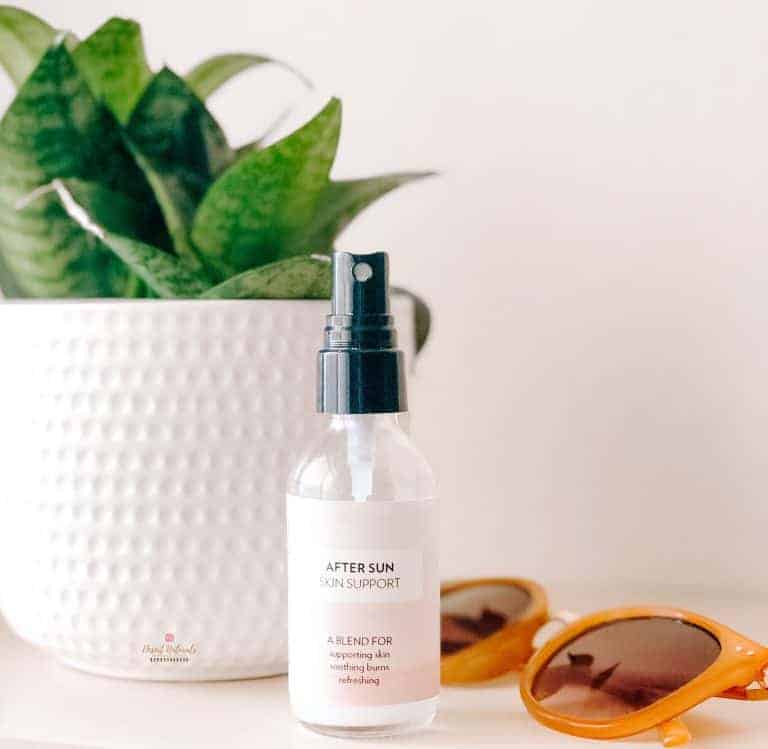
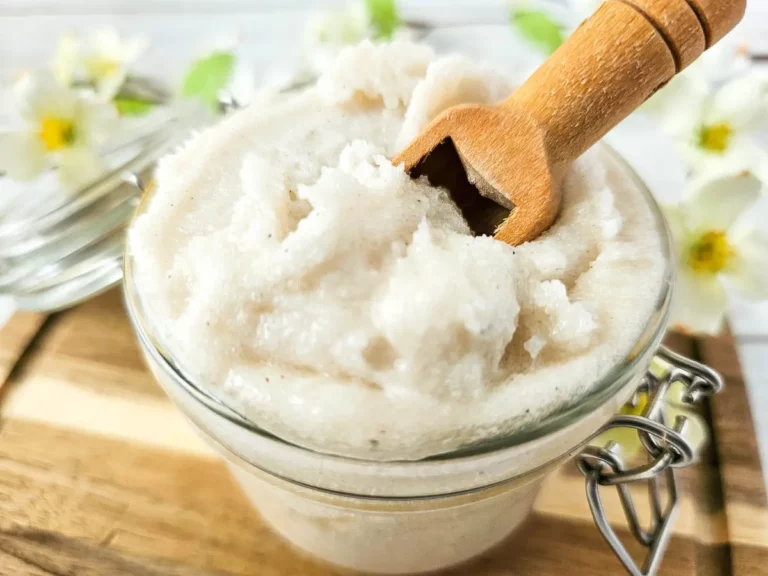
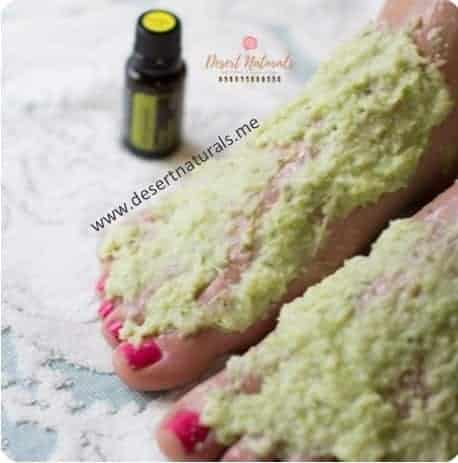
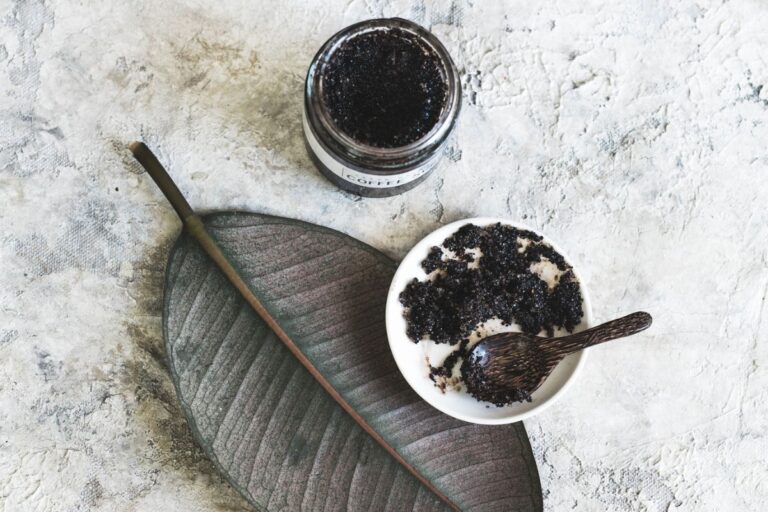
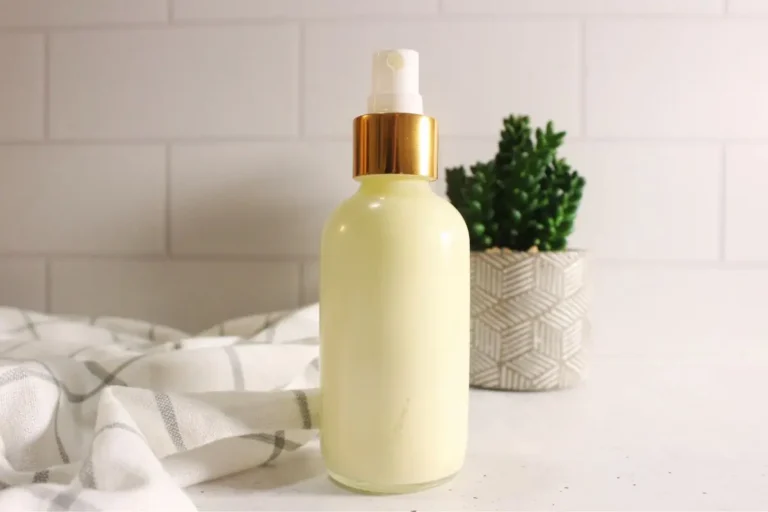
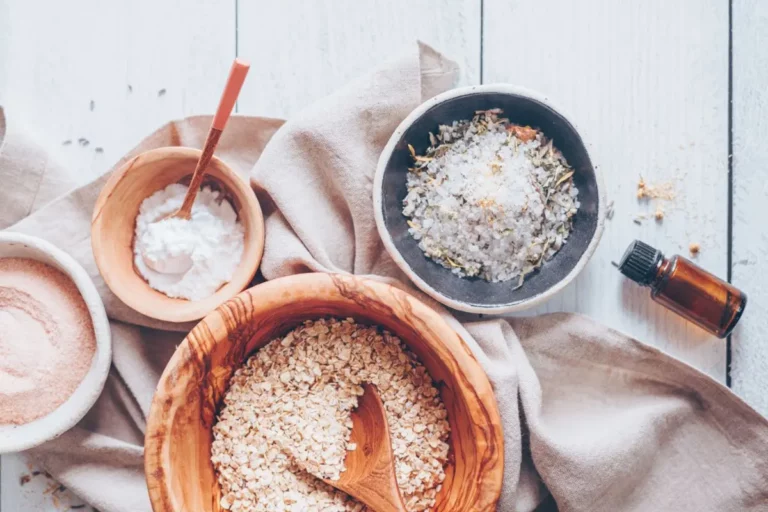
help! I think I mixed it too much after I added the essential oils and it broke down. now I have a nice glob of tallow sitting in a lovely water mixture. Do I need to scrap this and start over?
So as I understand it there are multiple kinds of magnesium and their uses vary depending on what you are wanting from their use. So is their a particular magnesium flake we are purchasing or is it the kind you would use for bath or foot soak?
Hi Cindy – you’ll want to use magnesium chloride flakes, which are probably not the same as the kind you would use for a foot bath. The recipe card has a link to the magnesium flakes I used so that you can use the same ones or find something similar. I’ve also updated to the article to include more about the type of magnesium to use.